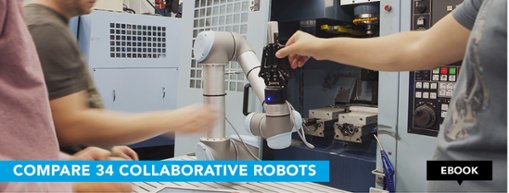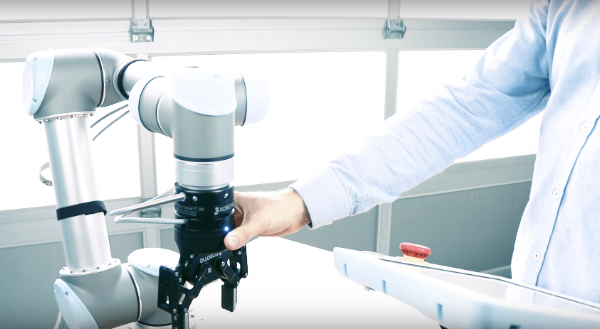10 Robot Terms You Need to Know

If you haven’t had to talk about robots yet, it’s likely that you will join the conversation soon. The following terms are useful to explain how a robot moves, how much it can lift, and how safe it is.
How Does the Robot Move?
Axis/degrees of freedom. The number of axes or degrees of freedom describes how the robot arm or body can maneuver. A good indicator of the number of axes is the number of joints; the more joints, the more degrees of freedom. However, axes and joints are not always a 1:1 ratio; it depends on how each joint moves, and how the robot is designed. Generally, a joint with 2 motors could provide 2 degrees of freedom.
The axes start with x, y, and z and then add the capability to tilt and turn. Degrees of freedom is an extremely important consideration and capability (or limitation) to consider when selecting a robot for an application. While more axes/degrees of freedom give you more flexibility, it also makes the programming more complicated. For more information about axes, and to see examples of 3 to 7-axis robots, see How Many Axes Should My Robot Have?
End effector. The end effector is the end of arm tooling, or the “hand” at the end of the robot arm. Common end effectors include grippers, vacuum cups, as well as cutting, drilling, deburring and other specialized tools. To increase the capabilities of certain end effectors, you can add a sensor or camera.
Hand guiding. Most often found in collaborative robots, hand guiding allows the robot to be moved manually into different positions or waypoints to help “teach” the robot how to do a task. Hand guiding is frequently used to program collaborative robots.
Reach. Reach sounds like a straightforward term; however, it is more complex than simply horizontal and vertical limits. You must also look at how the arm will be positioned when it reaches the destination point. The more axes or degrees of freedom the robot has, the less linear the reach will be. Think of how your arm moves; for example, you can’t touch your elbow, but you can reach around obstacles.
Repeatability. Repeatability is how consistently the robot does the same thing over and over again. It may be off-target, but if it's off-target consistently in the same place, then the repeatability is high. It's useful to look at both repeatability and accuracy.
Tool changers. When several different end effectors will need to be used on the same robot, a tool changer simplifies the process by providing an “easy switch” interface between the end of the robot arm and the tool.
How Much Can the Robot Lift?
Payload. The weight that the robot can carry is called the payload. The end effector you choose will also have a payload. Payload is not only a factor in the initial implementation, but also if you want to repurpose the robot. Switching from picking a lightweight circuit board to lifting a stack of shelves may not be possible if the payload is too low. Lower payload robots tend to weigh less and are easier to move around for redeployment; however, the payload must be able to accommodate each scenario. Components such as cameras and end effectors that are attached to the robot must be included in the calculation of the payload.
Grip force. The grip force is the amount of force the end effector applies on an object to hold it as the robot moves. Grip force is not the same as payload. Think of the grip strength of a tennis player or a rock climber. While the person can use their hand to lift a maximum weight (payload), their grip strength also plays an important role in how successful they are at their chosen activity. So, not only do you need to consider end effector payload or strength; you also need to consider how tightly the end effector needs to hold objects.
Is the Robot Safe?
Collaborative. When talking about collaborative robots, people usually mean force-limited robots with built-in safety features that allow them to operate safely around humans. However, it is possible to have a force-limited robot that isn’t safe for collaborative work. It’s also possible to have a non-force limited robot with another safety feature that allows it to be used near human workers. To learn more, see What Does Collaborative Robot Mean?
Force limiting. Force limiting is a safety feature that can allow robots to operate near humans without cages or other barriers. A force-limited robot will generally move at a slow, safe speed, and will have sensors that detect impact and will stop movement if a threshold is crossed.
Evolving Technology
With so many innovations in automation and robotics, new terminology will be introduced and existing terms will change meaning. This list will need revisiting, pruning, and expanding as robotic technology evolves.







Leave a comment